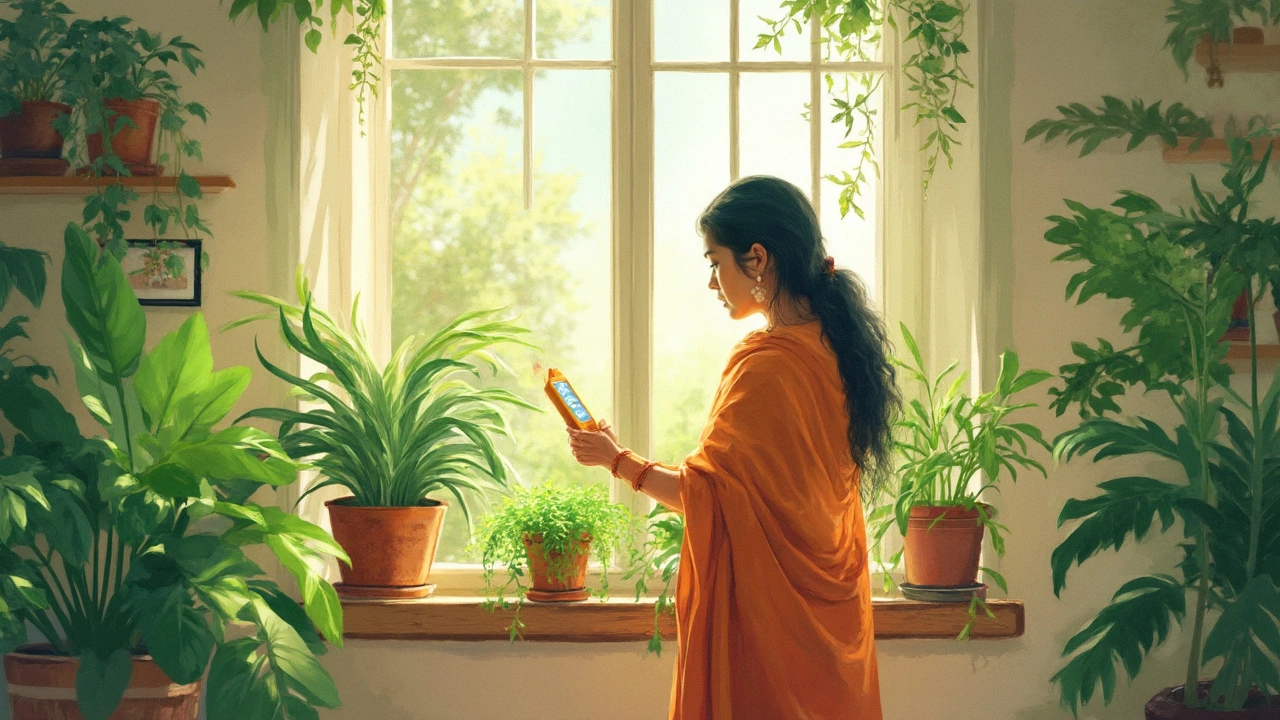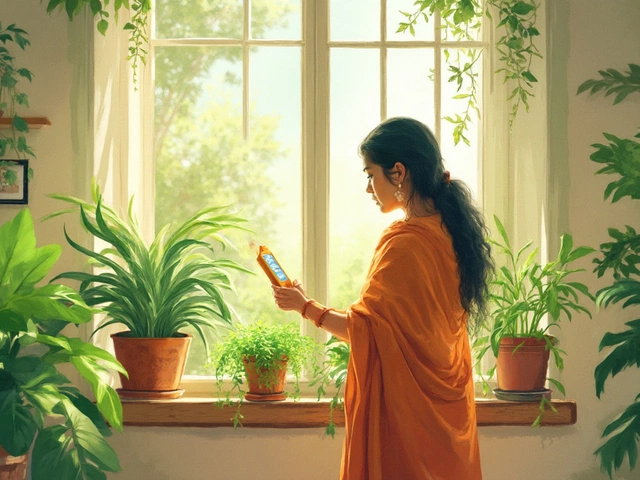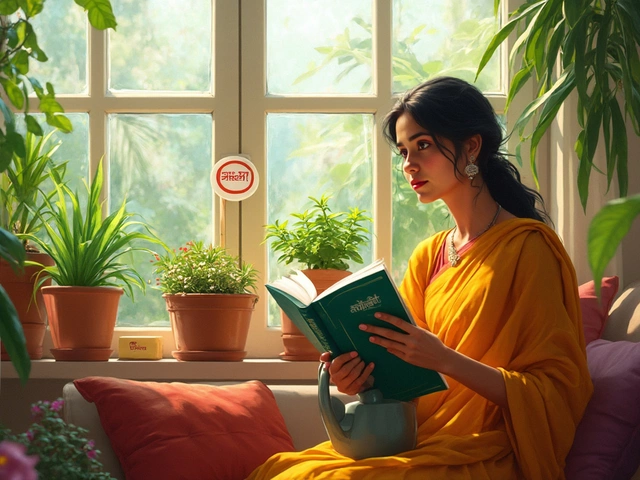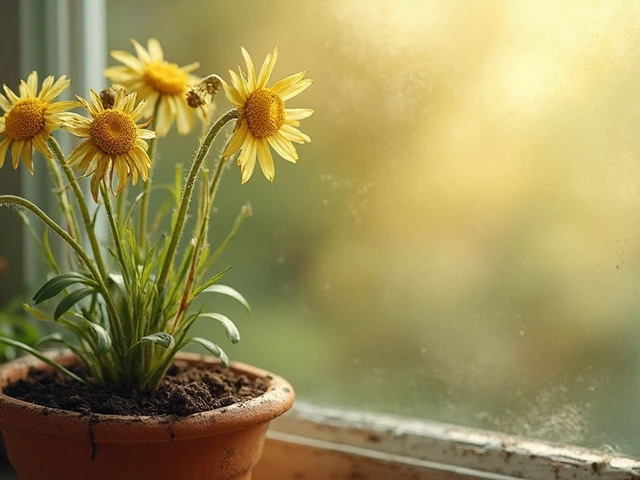Got a houseplant that looks a bit under the weather? You might be wondering, "Is it getting too much water or not enough?" The struggle’s real, and nailing the right watering routine can make all the difference. So, how do you tell if you're overdoing it or undercutting their thirst?
First up, let’s chat about signs of overwatering. Imagine your plant's a sponge... when it gets too soggy, it’s not a happy camper. You might notice wilting, but don't get confused—droopy leaves could be your plant’s way of saying, "You're drowning me!" Another tell? Yellowing leaves that drop like bad habits. If the soil’s soggy and you can smell something funky, like a wet basement, your plant's likely crying for help.
- Signs of Overwatering
- Signs of Underwatering
- Common Mistakes and Misconceptions
- Practical Tips for Fine-Tuning Watering
- Keeping Your Plants Happy and Healthy
Signs of Overwatering
Overwatering is a common issue when it comes to indoor plant care. It’s easy to assume that if a little water is good, a lot must be better. But, that's not the case here. Your leafy friends are more like us than you think—too much of a good thing can be a problem.
One major giveaway of overwatering is when your plant's leaves start turning yellow. Picture them like yellow traffic lights: they're warning you to stop and check your watering habits. Yellow leaves can drop prematurely, leaving your plant looking sparse.
Then there's the wilting. You might spot your plant drooping and think it’s thirsty, but hold on a minute. A wilting plant can actually be a sign of being oversaturated, because the roots are struggling to breathe in the excess water.
Ever noticed a foul smell coming from the pot? That’s not your imagination. Stagnant water in the soil can lead to root rot, which produces nasty odors as the roots begin to decay.
- Yellowing leaves: This is a classic symptom, particularly on lower leaves.
- Wilting: If the plant droops even when the soil isn't dry, overwatering is likely the culprit.
- Root rot smell: A strong odor could indicate decaying roots.
- Fungal growth: If you see mold or fungi on top of the soil, it's been too wet.
Check out the soil’s condition too. Is it always soggy or never allowed to dry out a bit between waterings? That needs addressing pronto! Remember, plant health depends on getting that balance just right. Try sticking your finger about an inch into the soil; if it's still damp, hold off on adding more water.
Sometimes, doing less can be way more beneficial for your plants than overdoing it. Keep an eye out for these signs and adjust your routine as needed. Your plants will thank you.
Signs of Underwatering
Wondering if your indoor plants are getting enough to drink? Underwatering is super common, especially if life’s keeping you busy and you forget to check them often. Your plants will do their best to let you know they're thirsty.
So, what should you look out for? First thing's first, if the leaves are crispy, that’s a big red flag. They might turn brown around the edges or look pale and sad. Plants that aren’t getting enough water have a way of showing it with limp, lifeless leaves.
You might also spot soil that looks like the Sahara desert. When it pulls away from the pot sides and cracks, it’s practically screaming for water.
- Look for soil that's dry and cracked.
- Notice leaves turning brown, especially at the edges or tips.
- Observe leaves becoming limp and lifeless.
Plants use water to stand tall. When they’re wilting or drooping, it’s a solid bet they need more hydration. But, remember, overwatering can cause wilting too! The trick is to check the soil. If it feels bone dry, it's time to water. Use a pot with good drainage, and give them a drink until you see a little water trickle out the bottom.
Here’s a helpful tip: Set a reminder on your phone to keep up with your plant's watering schedule. Just don’t go overboard; more on that in the overwatering section!
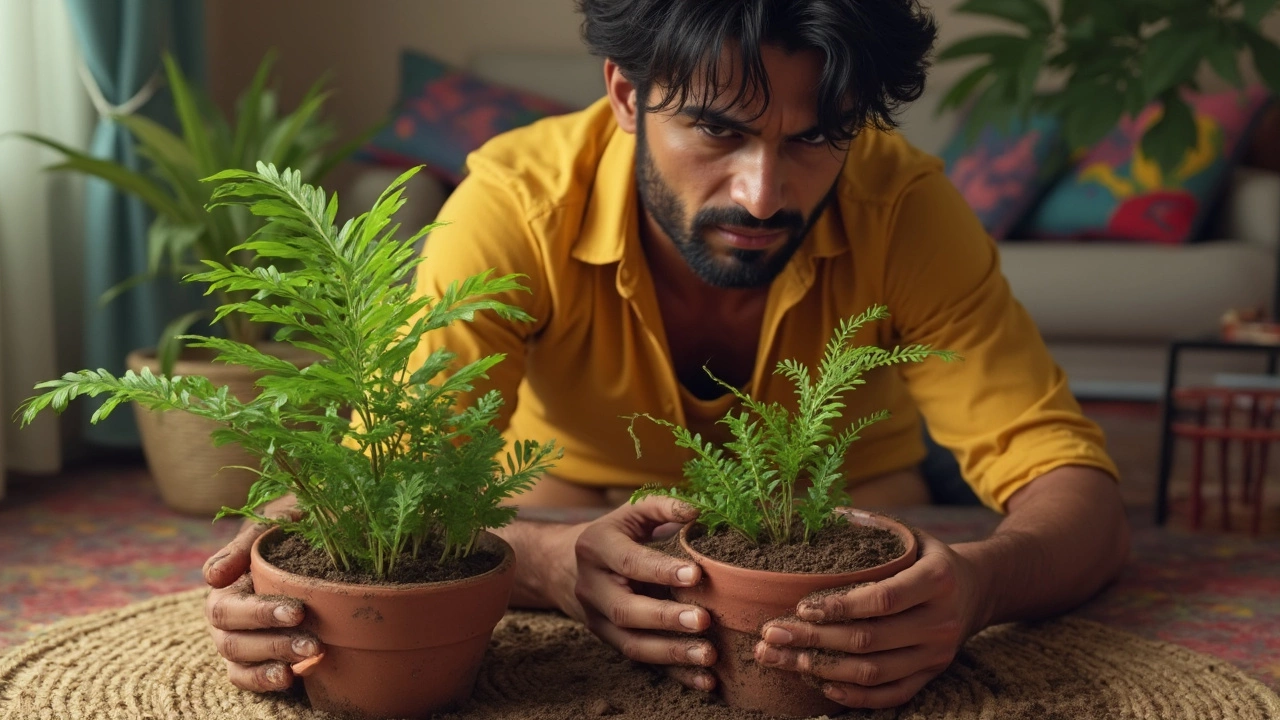
Common Mistakes and Misconceptions
Tending to indoor plants can seem like a walk in the park until you find out how many well-meaning folks fall into the same traps. Think you need to water right on schedule no matter what? That's a biggie—not every plant likes being treated like clockwork. Some plants are chill and happy with just a splash here and there, while others can survive a tiny drought.
And here's another kicker—some people think brown leaf tips mean the plant’s super thirsty. But hold up; browning could also be a sign of overwatering or even a lack of humidity, not just a cry for more water. It’s easy to misread these signs, so always check the soil first.
Another trip-up in indoor plant care is assuming that more sunlight means more water needs. Nope! Some plants soak up sun like it’s their best friend but still prefer minimal watering. Don't fall into the trap of thinking one size fits all for all your plant buds.
Also, hold off on assuming that store-bought plants stay in their same pot forever. Over time, those pots might become crowded, and water can get stuck without proper drainage, causing root rot—a sneaky enemy of plant health.
- Use Your Finger: Check the moisture a couple of inches down in the soil before you water. It’s a simple trick but can save your plant from drowning or drying out.
- Look for Wilting and Yellowing: Figuring out if it's over- or underwatering is crucial. If leaves are yellowing and dropping, test the soil to see if it's soggy or bone-dry.
- Adapt to Your Plant’s Language: Get to know each plant's preferences, as some are introverts in the water department. A handy rule of thumb? When in doubt, err on the side of less water.
Practical Tips for Fine-Tuning Watering
So you've realized that your green buddy might be a bit too wet or a touch too dry. No worries—you can totally get things back on track with a few easy tweaks. Here are some no-fuss tips to help zero in on the sweet spot between overwatering and underwatering.
First things first: feel the soil. Stick your finger about an inch into the dirt. If it feels dry, it's time for a drink. If it’s still moist, hold off on watering. This simple finger test might just be your new best friend in indoor plant care.
Next, think about drainage. Make sure your pots have drainage holes. Without them, extra water has nowhere to go, turning your plant's home into a swamp. Good drainage prevents the dreaded root rot, which is like a death sentence for plants.
Want a techy trick? Invest in a moisture meter. They’re pretty cheap and can tell you more accurately if the soil is damp. Just poke it in the soil and check the reading. It’s like having a personal assistant for your plants!
When you water, do it thoroughly. Let water run through the drainage holes; then, empty any saucers under your pots. This prevents standing water from causing issues.
- Water in the morning: Plants like to drink when the sun comes up. It gives them time to dry out during the day.
- Adjust with the seasons: In winter, plants need less water. They’re sort of in a sleepy mode, so they don’t drink as much.
- Group plants by water preference: This is a lifesaver. Keep thirsty plants together and the drought-tolerant ones elsewhere.
Finally, if you travel a lot, think about getting a self-watering pot. They have reservoirs that hold extra water your plant can use whenever it's thirsty.
Following these tips will make you a pro at balancing indoor plant care. Your leafy buddies will thrive, and your indoor space can finally become the envy-inducing jungle you’ve always dreamed of!
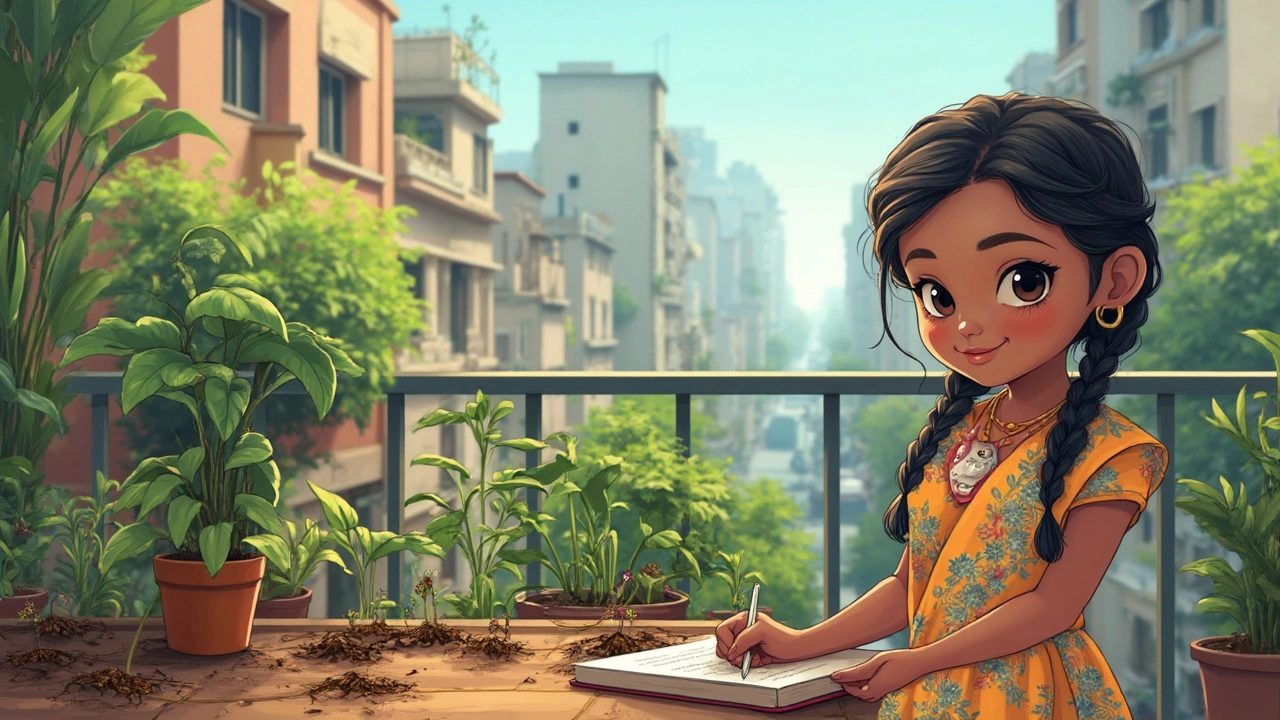
Keeping Your Plants Happy and Healthy
Getting your indoor plants to thrive isn't just about watering—it's about understanding their needs like a new friend. A few key practices can help keep your green buddies cheerful.
Light plays a significant role. Most indoor plants aren't sun worshippers, but they do need light. Got a sunny windowsill? Great! Just make sure the plant doesn’t get burnt. Some plants like the indirect light dance—place them where the light's bright but not directly on them like the shade of a summer tree.
Soil is more than just dirt. It’s your plant’s base, and it's got to be right. Use well-draining potting mix to prevent that whole soggy mess we talked about. A good soil mix is like a good mattress—supportive but not smothering.
According to horticulturist Jane Woodhouse, "The key to a healthy plant is understanding its natural habitat and trying to recreate those conditions as best you can. Plants will communicate what they need, but it takes a keen eye and a bit of patience to learn their language."
- Humidity matters. Especially for tropical plants, offering a touch of mist or placing a tray with water nearby can be as soothing as a long shower after a rough day.
- Check for pests regularly—those little suckers can damage your beloved greenery swiftly. Keeping leaves clean and trimmed can keep them at bay.
Consider organizing a watering schedule that suits each plant’s unique needs. Some love a weekly spa day; others prefer to tough it out a bit longer.
Here's a quick stat to keep handy when fussing over your indoor garden:
| Plant Type | Water Frequency |
|---|---|
| Succulent | Every 2-3 weeks |
| Fiddle Leaf Fig | Weekly |
| Snake Plant | Every 2-4 weeks |
By tuning into what your plants are saying and tweaking your routine accordingly, you can create a thriving indoor jungle that makes your space feel like home.
